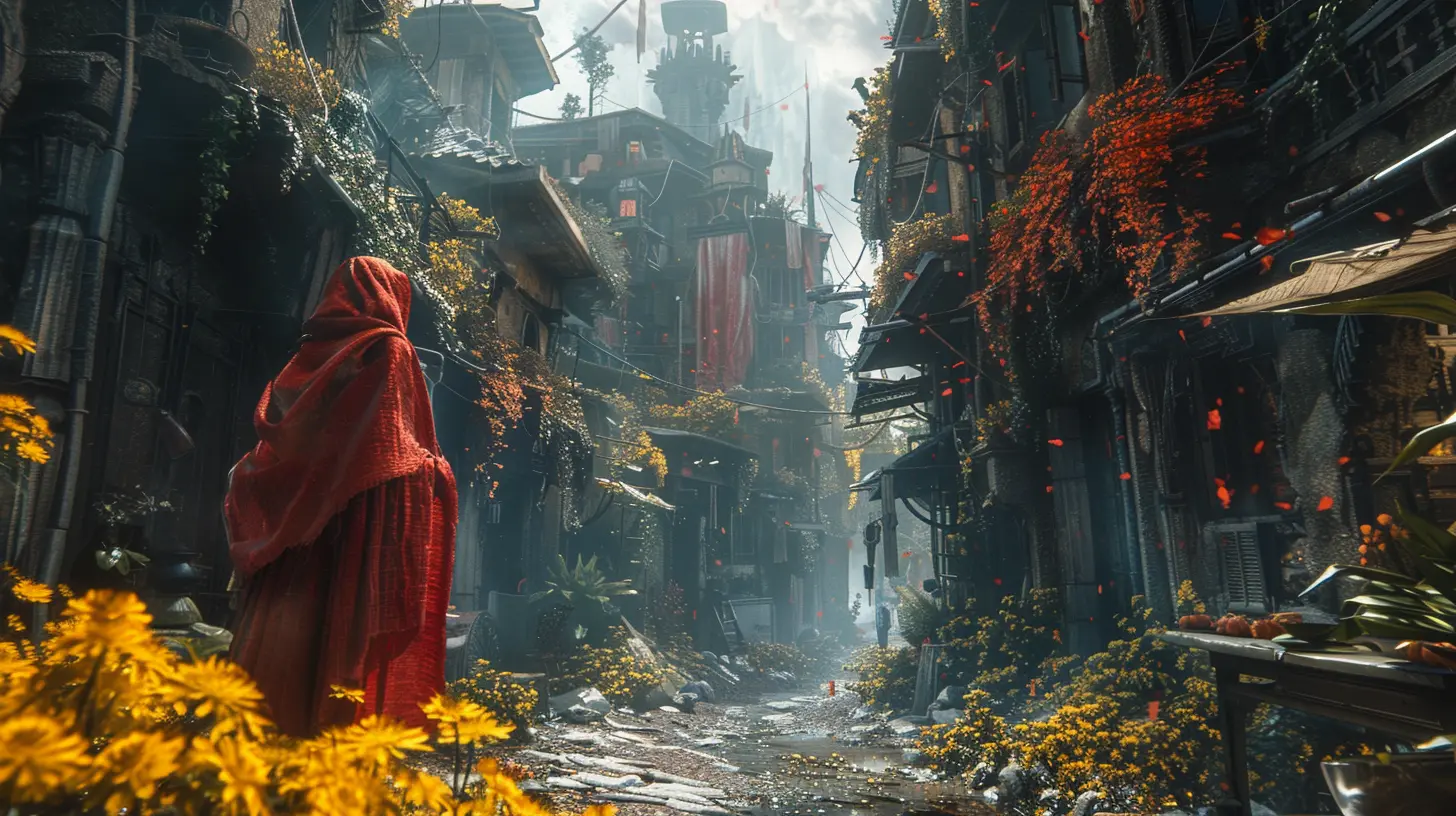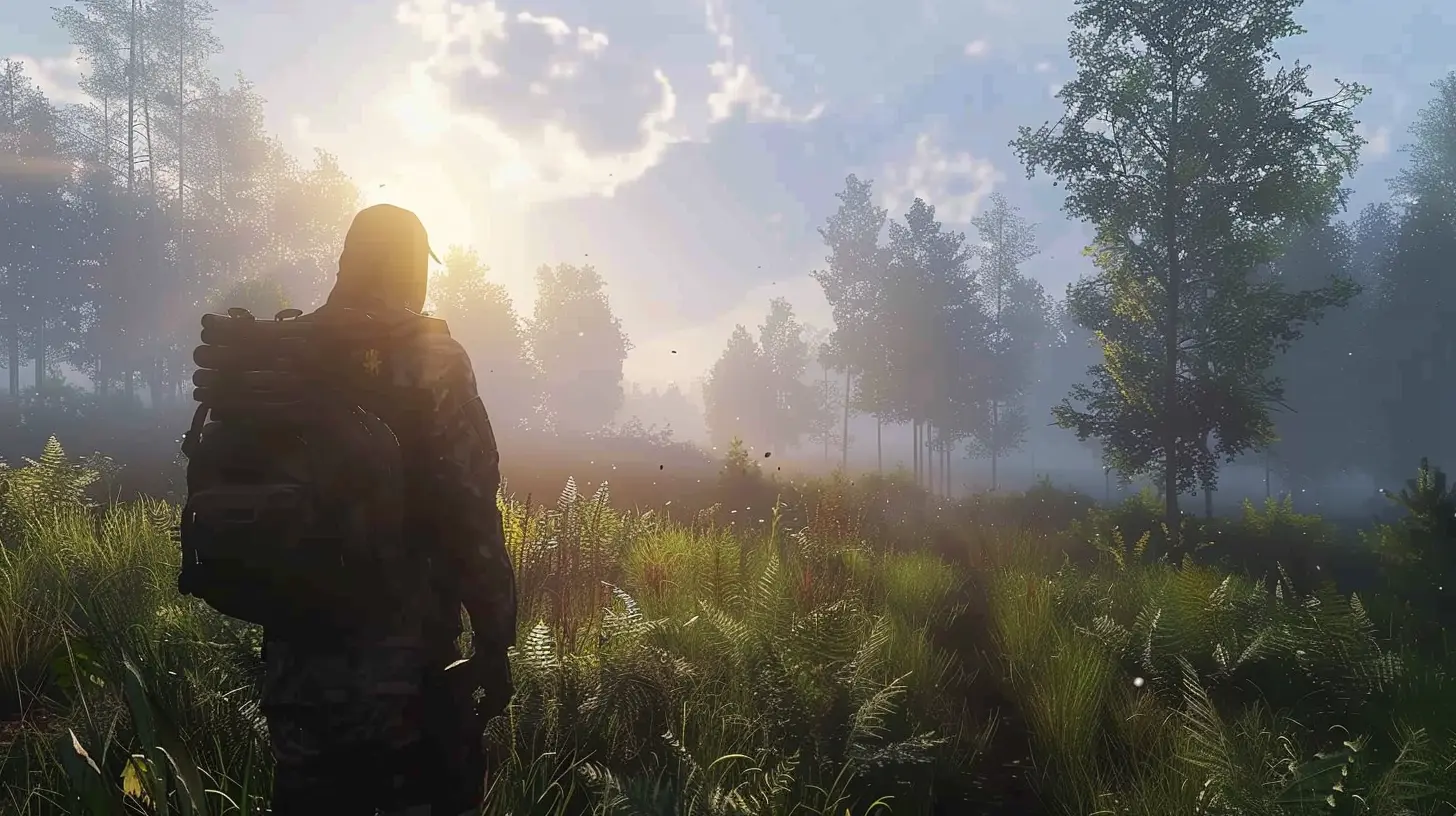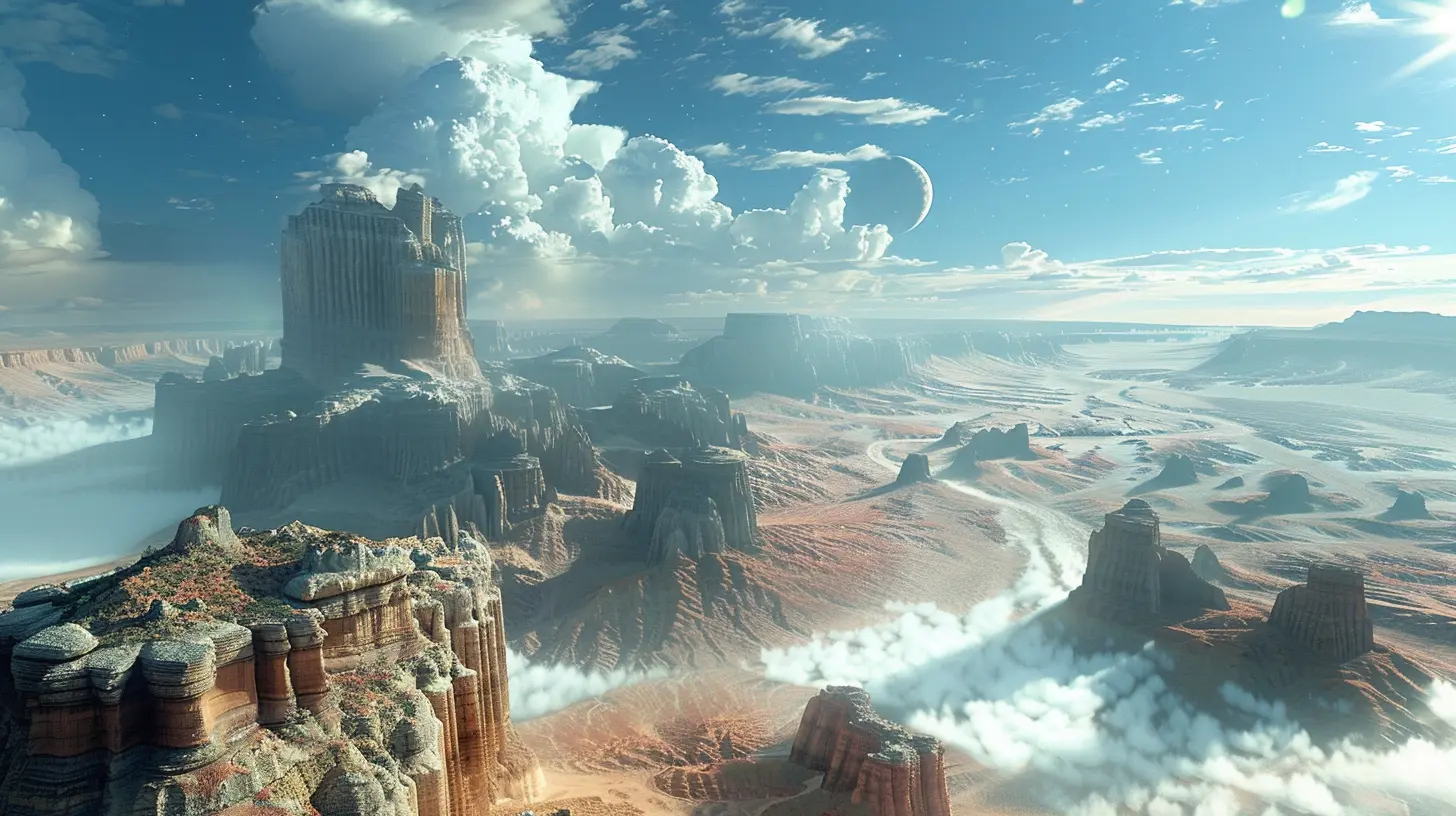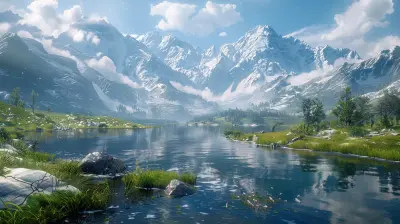Dreaming Big: Large Scale Open Worlds in Unreal Engine
20 October 2025
Have you ever booted up a game and just stood there, jaw dropped, staring into the sprawling landscapes, wondering, "How the heck did they make this?" Yeah, me too. Open-world games have come a long way, and the tech behind them? Even crazier. At the heart of many of today’s most jaw-dropping, massive game worlds is a beast of an engine: Unreal Engine.
In this post, we're diving deep into what makes Unreal Engine such a powerhouse for building large-scale open worlds — the kind of worlds where you can climb the tallest peak, get lost in dense forests, or just ride off into the sunset, all without hitting a load screen.
So, buckle up. If you're a game dev, a dreamer, or just someone nerding out over game design, you're in for a treat.
The Allure of Open Worlds: Why They Matter
Open worlds aren't just about size. Sure, it's impressive to say your game map is bigger than Skyrim, GTA V, and Red Dead Redemption combined. But the real magic? It's the freedom. You're giving players a whole universe to live in.It’s like handing someone a blank canvas and a set of paints. Want to follow the main quest? Great. Want to ignore it and start a chicken farm instead? Go for it.
Players today crave immersion. They want a world that feels alive — with weather systems, wildlife, NPCs going about their day, and stories tucked away in every corner. Unreal Engine gives developers the tools to craft that magic on a scale we never thought possible.
Unreal Engine: A Quick Rundown
Before we jump into the nitty-gritty, let’s get on the same page. Unreal Engine is Epic Games’ pride and joy. It's a game engine that's free to use (with royalties once your game hits certain sales), and it's known for its absolutely stunning visuals, real-time rendering capabilities, and flexibility.With each iteration — especially with Unreal Engine 5 — Epic has pushed the boundaries of what's possible, especially when it comes to creating open worlds.
What Makes Unreal Engine Ideal for Massive Open Worlds?
You ever try building a huge map in a game engine and your PC starts melting? Yeah, Unreal Engine kinda fixes that. Here’s how:1. World Partition System
Let’s talk scalability. The World Partition system in UE5 literally divides the world into a grid and loads/unloads sections as needed. Think of it like Netflix streaming — you don’t download the whole library, just the episode you're watching. That’s a game-changer (pun intended).This means developers can craft gigantic worlds without worrying about memory overload or performance dips. For players, it translates to buttery-smooth exploration.
2. Nanite Virtualized Geometry
Grabbing high-poly assets from ZBrush or Quixel Megascans and dropping them straight into your world without destroying performance? Yes, please.Nanite allows for insane levels of detail without bogging down the game. Imagine stacking millions of triangles on screen and still keeping frame rates solid. That level of detail used to be a dream — now it’s a default.
3. Lumen Global Illumination
Lighting is everything. A world feels alive when light bounces realistically, shadows creep and shift, and sunsets bathe valleys in golden hues. Lumen brings that realism.With real-time global illumination, Lumen makes sure your world doesn’t just look big — it feels big. It responds to time of day, weather changes, and even dynamic events. This kind of depth was previously reserved for pre-rendered scenes. Now? It’s real-time eye candy.
Building Large-Scale Worlds Step-by-Step
Let’s say you're itching to build your own open world. What’s the roadmap look like?Step 1: Start With the World Design
Size matters… kinda. Before worrying about kilometers of map space, think about meaningful content. A huge empty field isn’t interesting unless something’s happening in it.Use terrain tools in Unreal to sculpt mountains, carve rivers, and create plateaus. Block out major city hubs, dungeons, and key exploration points first.
Step 2: Use Landscape Streaming
With landscape streaming, you can divide your terrain into chunks and only load what’s visible to the player. This allows for a massive environment without the constant performance hit.Each chunk can have its own foliage, NPCs, quests, even weather systems — all streaming in seamlessly.
Step 3: Populate Smartly
Don’t just spam trees and assume your world feels alive. Use procedural foliage tools, landscape layers, and AI-driven wildlife to give your world a natural feel.Ambient sounds, wind effects, and subtle environmental storytelling (a destroyed caravan, a hidden campfire) add more than you’d think.
The Challenge of Keeping Players Engaged
A big world is only good if there’s stuff to do. Ever played a massive game and felt… bored? You need pacing, rewards, and surprises.Using Unreal’s Blueprint system, you can tie game logic to the environment. Maybe players stumble on a hidden cave where a unique creature resides, or a random event appears based on time and location.
Unreal’s AI tools and behavior trees help build smarter encounters — NPCs that react to your reputation, enemies that patrol intelligently, or animals that scatter when you approach.
Multiplayer and Massive Worlds: A Whole New Ball Game
Want your huge world to also support multiplayer? Things get wild.Unreal Engine’s replication system — how info is shared between the server and players — is robust, but you’ve got to plan early. Managing data over large distances, keeping AI synced, and handling dozens (or hundreds) of players needs a pretty strategic approach.
Luckily, there's Chaos Physics and World Partition streaming to assist. Combined with dedicated server support, you can host vast online experiences, from survival games to MMOs.
Case Studies: Open Worlds That Nailed It
1. Fortnite (Yeah, it’s Unreal Engine)
Epic Games’ poster child constantly evolves with new biomes, weather systems, and mechanics — all live. It’s a masterclass in how to keep a world dynamic without constant downtime.2. ARK 2 (in development)
The first ARK was already massive. With ARK 2 powered by Unreal Engine 5, the devs promise an even grander scale, matched with realistic lighting and physics. Dinosaur survival in a world that feels lived-in? Sign me up.3. S.T.A.L.K.E.R. 2
Set in the Chernobyl Exclusion Zone, this upcoming title mixes horror, survival, and exploration. It showcases UE5’s ability to render eerie, highly detailed environments with seamless traversal.Modding & Community Tools
One underrated aspect? Unreal Engine plays nice with modders. Epic’s expanding marketplace lets devs collaborate, share tools, and buy/sell assets easily.You don’t have to build every tree, monster, or castle from scratch. Want a realistic forest biome? Someone probably made it, and it’s ready to go. This speeds up production and encourages experimentation.
Performance and Optimization: Don’t Skip It
Yes, Unreal makes it easier to build huge, gorgeous worlds — but you still need to optimize. Even the best engine can’t fix bad planning.Use tools like:
- Level of Detail (LoD): Swap high-res models for simpler ones at distance.
- Occlusion Culling: Don’t render what the player can’t see.
- HLOD (Hierarchical Level of Detail): Group distant objects to reduce draw calls.
- Shader Complexity View: Spot areas that might drop frame rates and adjust.
Remember, if your world slows to a crawl, all the beauty means nada.
The Future of Open Worlds in Unreal
Here’s the crazy part — we’re just getting started. With the rise of procedural generation, AI-driven storytelling, and cloud-based development, the next-gen open worlds will be more dynamic, organic, and player-driven than ever.Imagine a world that writes its own quests, evolves based on players’ choices, and reacts in real time to global events. Unreal Engine is laying that groundwork now.
Final Thoughts: Dream Big, Build Smart
Creating a large open world in Unreal Engine isn’t just a technical challenge — it’s an art form. You’re not just designing a map, you're crafting an experience, a place people will explore, inhabit, and talk about for years.Go big, but stay smart. Be bold, but don’t lose sight of the player’s experience. Unreal Engine gives you the tools — the rest is up to your imagination.
So dream big. Then build it.
all images in this post were generated using AI tools
Category:
Game EnginesAuthor:

Avril McDowney
Discussion
rate this article
1 comments
Mira McCullough
Exciting insights! Can't wait to explore vast worlds!
October 20, 2025 at 3:37 PM

Avril McDowney
Thank you! I'm thrilled you’re excited to dive into these worlds!


